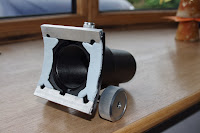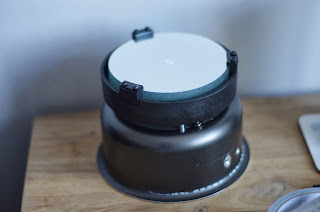Every
physicist has to know the joke about the dairy farmer. Seriously, if
you don't know it, you can't call yourself a physicist. It really
should be added to the IoP's requirements for the accreditation of
physics degrees. If you have such a degree, and none of your
lecturers ever told you the joke, please write a letter of complaint
to your alma-mater immediately. In case you find yourself in that
unhappy situation, here it is:
A
dairy farmer, struggling to make a profit, asked the academic staff
of his local university to help improve the milk-yield of his herd.
Realising it was an interdisciplinary problem, he approached a
theoretical physicist, an engineer and a biologist. After due
consideration, the engineer contacted him. "Good news!" she
said. "My new design of milking machine will reduce wastage,
increasing your yield by 5%." The farmer thanked her, but
explained that nothing short of a 100% increase could save the farm
from financial ruin. The biologist came up with a better plan:
genetically-modified cows would produce 50% more milk. But it was
still not enough.
At
last the theoretical physicist called, sounding very excited. "I
can help!" he said. "I've worked out how to increase your
milk yield by six hundred percent."
"Fantastic!"
said the farmer. "What do I have to do?"
"It's
quite straightforward," explained the physicist. "You just
have to consider a spherical cow in a vacuum..."
I
shouldn't break the cardinal rule never to explain a joke, but... the
gag works because you recognize the theoretical physicist's habit of
simplifying and idealizing real-world problems. At least, I hope you
recognise it, although I wonder if it's a dying art. With the
availability of vast computer-processing power and fantastically
detailed experimental data in many fields, there is an increasing
trend to construct hugely complex and comprehensive theoretical
models, and number-crunch them into submission. Peta-scale computers
can accurately simulate the trajectories of vast numbers of atoms
interacting in complex biological fluids, and can even model the
non-equilibrium thermodynamics of the atmosphere realistically enough
to fluke an accurate weather forecast occasionally.
Superficially,
it might seem like a good thing if our theoretical models can match
real-world data. But is it? If I succeed in making a computer spit
out accurate numbers from a model that is too complex for my meagre
mortal mind to disentangle, can I claim to have learnt anything about
the world?
In
terms of improving our understanding and ability to develop new ideas
and innovations, making a computer produce the same data as an
experiment has little value. Imagine I construct a computer model of
an amoeba, that includes the dynamics of every molecule and every
electron in it. I can be confident that the output of this model will
perfectly match the behaviour of the amoeba. So there is no point in
wasting computer-time simulating that model; I already know what the
results will be, and it will teach me precisely nothing about the
amoeba.
If
I want to learn how an amoeba (or anything) works, by theoretical
modelling, I need to leave
things out
of the model. Only then will I discover whether those features were
important and, if so, for what.
When
I was a physics undergraduate, I remember once explaining Galileo's
famous experiment to a classicist friend; the (possibly apocryphal)
one where he dropped large and small stones from the leaning tower of
Pisa, to demonstrate that gravity applies the same acceleration to
all bodies. "But a stone falls faster than a feather," she
protested. I said that was just because of the air resistance, so the
demonstration would work perfectly if you could take the air away.
"But you can't," she pointed out. "The theory's
pointless if it doesn't apply to the real world. So Galileo was
wrong." I have a strong suspicion that she was just trying to
wind me up - and succeeding. The point, which she probably
appreciated really, is that the idealized scenario teaches us about
gravity, and we can't hope to understand the effects of
gravity-plus-air before we understand gravity alone.
Similarly,
if Newton had acknowledged that no object has ever found itself
perfectly free of any unbalanced force, he would never have
formulated his first law of motion. If Schroedinger had fretted that
an electron and proton cannot be fully isolated from all external
influences, he would have failed to solve the structure of the
hydrogen atom and establish the fundamentals of quantum mechanics.
The simplicity of the laws of nature can only be investigated by
idealized models (like the one-dimensional "fluid" below),
before adding the bells and whistles of more realistic scenarios.
With
increasing research emphasis on throwing massive experimental and
computational power at chemically complex biophysical and
nanotechnological systems, and in the face of financial pressure to
follow applications-led research, it would be easy to forget the
importance of developing idealized models, elegant enough to deduce
general principles that transcend any one specific application. So
let's adiabatically raise a semi-infinite glass of (let's assume)
milk, and drink to the health of the spherical cow.
























.jpg)
